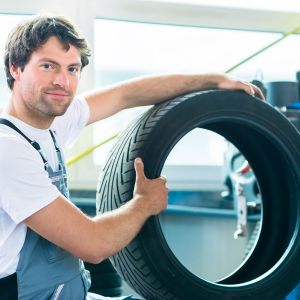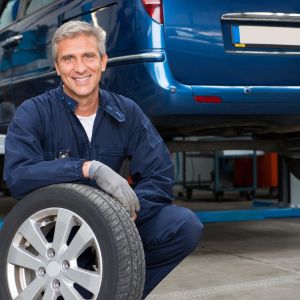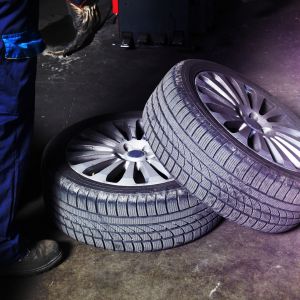Performance and puncture resistance are advantages of tubeless tyre, but they may be more expensive and more difficult to install and maintain than standard tyres. Tubeless tyres might be a better option for you if puncture resistance and performance are your top priorities. Normal tyres can be a better option if cost and ease of usage are your top priorities.
What is a normal tyre?

Normal tyres, usually referred to as clincher tyres, are a typical type of tyre seen on most cars and road bicycles. It contains a rubber inner tube that fits inside the tyre and maintains air pressure. The inner tube is inflated using a different valve from the tyre, which is why they are separate.
The tyre itself is made up of numerous layers. Rubber forms the tread’s outer layer, which is intended to offer durability and traction. The inner tube and tread are intended to be supported by the intermediate layer, often known as the carcass, which is comprised of woven cloth. To hold the tyre firmly on the wheel, the inner layer, or bead, is comprised of steel or Kevlar.
Since they employ an inner tube, regular tyres are affordable and simple to install and repair. Additionally, they are generally accessible and work with the majority of wheels. In terms of performance and puncture resistance, they fall short of tubeless tyres.
What is a tubeless tyre?

A tyre that is made to be utilised without an inner tube is known as a tubeless tyre. Instead, a special sealant is put into the tyre before it is mounted on the wheel, creating an airtight seal between the tyre and the wheel.
Similar to a typical tyre, the tyre is made up of numerous separate layers. Rubber forms the tread’s outer layer, which is intended to offer durability and traction. The central layer, known as the carcass, is constructed of woven cloth and serves as support for the tread.
To hold the tyre firmly on the wheel, the inner layer, or bead, is comprised of steel or Kevlar.
In comparison to conventional tyres, tubeless tyres have a number of benefits, including the ability for the rider to continue riding for a short distance before needing to have the tyre repaired in the event of a puncture. A tubeless tyre can also be operated at lower pressures than a conventional tyre without the danger of pinch flats, which can aid to increase traction and handling.
Difference between the normal tyre and tubeless tyre

A rubber inner tube that sits within a standard tyre, commonly referred to as a clincher tyre, keeps air inside the tyre. The tyre and inner tube are distinct, and a different valve is used to fill the inner tube. The tyre itself normally does not need to be removed from the wheel in the event of a car puncture, but the inner tube can be quickly removed and replaced.
On the other hand, a tubeless tyre has no inner tube. Instead, a special sealant is put into the tyre before it is fitted on the wheel, creating an airtight seal between the rubber and the wheel. The sealant is intended to fill the hole left by a puncture and stop the tyre from losing air.
The major benefit of a tubeless tyre is that in the event of a puncture, the tyre will not lose all of its air immediately, allowing the rider to continue riding for a short distance until they can repair the tyre. Additionally, a tubeless tyre can be run at lower pressures than a clincher tyre without the risk of pinch flats, which can help to improve traction and control.
Which tyre is better to use normal or tubeless?
Whether a normal tyre or a tubeless tyre is better for you depends on your specific needs and preferences.
- A tubeless tyre will not immediately lose all of its air in the event of a puncture, allowing the rider to continue for a short distance until they can fix the tyre.
- In order to reduce the possibility of pinch flats, tubeless tyres can be operated at lower pressures than conventional tyres. This can help to increase traction and handling.
- Additionally, tubeless tyres have reduced rolling resistance, which can increase efficiency and speed.
- Since they need a special sealant to form an airtight barrier between the tyre and the wheel, they might be trickier to install and repair than regular tyres.
- They might cost more than regular tyres.
- Repairing tubeless tyres is more difficult than fixing standard tyres; you could need to replace the sealant or the entire tyre.
- Normal tyres, on the other hand, use an inner tube and are inexpensive, simple to install, and easy to repair. Additionally, they are generally accessible and work with the majority of wheels.
How do I know if my tyre is tubeless?
There are several methods for figuring out whether your tyre is tubeless:
- Look for the words “Tubeless” or “TL” on the tire’s sidewall. Many producers will mark their tubeless tyres with this designation.
- Look over the valve stem. Unlike tyres with tubes, which do not normally have a detachable valve core, tubeless tyres do.
- Check the tire’s interior. It is most likely tubeless if there is no tube present and the tyre has an airtight lining or sealant on the inside.
- To find out if your tyre model is tubeless or not, check the owner’s manual for your bike or the website of the tyre manufacturer.
It’s crucial to keep in mind that not all wheels work with tubeless tyres, so check to see if your wheel is made for tubeless use before making the switch. If unsure, seek advice from a qualified bike mechanic.
Frequently Asked Questions
Q1. Are tubeless tyres better?
Ans: Tubeless tyres can offer benefits such as a lower risk of punctures, improved ride quality, and the ability to run at lower tyre pressures.
Q2. Can I use a normal tubeless tyre?
Ans: Normal tyres can be used tubeless with the use of a sealant.
Q3. How do I know if my tyre is tubeless?
Ans: You can tell if a tyre is tubeless by looking for a specific type of bead or sidewall construction, or by checking the manufacturer’s specifications.
Q4. Can tubeless tyres go flat?
Ans: Tubeless tyres can still go flat, but it’s less likely because the sealant will often seal small punctures.
Q5. Do tubeless tyres go faster?
Ans: It is not clear that tubeless tyres are faster than traditional tubed tyres.
Q6. Can tubeless tyres burst?
Ans: Tubeless Tyres can still burst, but again, the sealant will often seal small punctures before they can cause a blowout.

